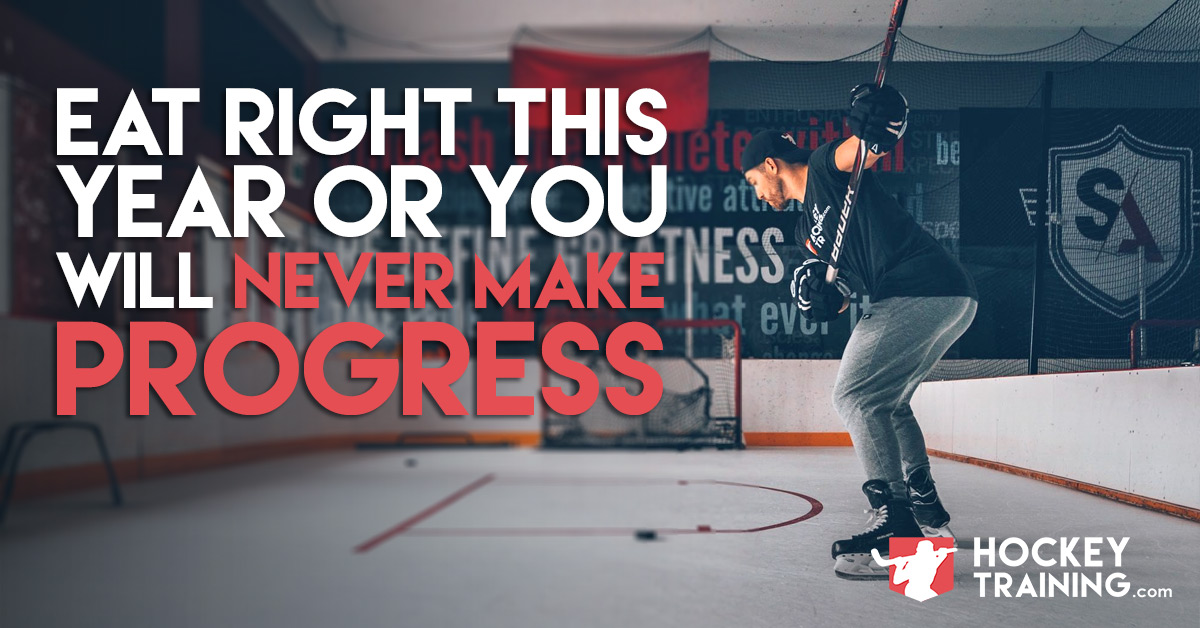This might sound strange coming from a guy who has a blog on a site called “Hockey Training” and not “Hockey Nutrition” – but it’s true nonetheless.
If you want to gain maximum muscle size to improve your strength out on the ice, drop maximum body fat to improve your speed out on the ice, and improve your recovery so you can perform at optimal levels day in and day out, the real key lies within your nutritional habits.
The Hard Gainer
It’s quite true that we are all very different from each other, but having said that, the principles of nutrition will always be the same – it’s only the methods that change.
For example, individuals with a blisteringly fast metabolism who have a tough time putting on weight will not progress very well at all on a moderate or low-carb approach, especially when it comes to optimizing recovery and muscle mass gains.
These individuals need a very high carbohydrate intake, and they need easy-to-digest carbs so that they can eat more of them in order to boost their daily caloric intake.
Because of their caloric needs, it’s best for these “hard gainer” types to consume 4-6 meals per day, and then include snacks in between those meals as well.
Each meal containing roughly two fist size servings of carbohydrates, one palm size serving of protein, and one thumb size serving of healthy fats.
In the real world, this would look like 2 cups of rice, 4-5oz of meat, and a tablespoon of extra virgin olive oil. The in between snacks should comprise of easily digestible yet calorie dense foods such as dried fruit, raw nuts, and natural peanut butter.
If you want more information on how to gain weight and build muscle mass, check out this article here.
The Easy Gainer
On the complete opposite side of the hard-gainer spectrum, you have your hockey athletes that can gain muscle/strength without much issues but tend to also gain plenty of body fat quite easily as well.
For these athletes, opting for a more moderate approach to carbohydrate intake (at least in the beginning, until they become much leaner) is ideal to fit their needs. It’s enough for them to support performance, recovery, and muscle gain – but not too much that they store unnecessary body fat.
In most cases for these people, opting for a meal that contains one fist size serving of carbohydrates, one to two palms size servings of protein, and one to two thumb size servings of healthy fats would be the typical meal structure.
In the real world, this would look like 4oz of sweet potato, 6oz of meat, and a small handful of raw nuts.
Additionally, this group should stay away from snacking all together until they reach a level of leanness that is more conducive towards hockey performance.
If you want more information on how to get shredded, check out this article here.
Don’t Train to Get Lean
When the main goal is to lose body fat, you need to use training as a way to prevent muscle mass loss during a diet, or, even stimulate new muscle gain (yes, it IS possible to drop body fat and build muscle at the same time).
But, training should not be used as your vehicle to stimulate fat loss.
Don’t get me wrong, the adaptations from your training (higher metabolism, increased muscle mass levels, higher levels of insulin sensitivity, etc.) and the additional calorie burning you receive from training will contribute to the process, but, you should be designing your programs purposefully for fat loss.
In other words, doing high reps and low weight is not going to help you maximally maintain your lean muscle mass during a fat loss phase, and in fact, this might promote further muscle mass loss.
Beyond this, the idea that circulates the industry surrounding the theory that training in a certain way will stimulate growth hormone release and therefore contribute to higher levels of fat loss is ridiculous.
The additional growth hormone release naturally secreted from your body is no where near the dose that bodybuilders illegally take for this purpose, so it’s a fool’s mission to think this will work for you.
The bottom line here is that the overwhelming majority of all your fat loss progress is going to come from your dietary approach.
The old saying is true, you can never out-train a bad diet, and anybody who has tried this already knows that fact.
Final Thoughts
At the end of the day, training is extremely important – but it’s only one piece of the puzzle. You need to still be fully aware of the power of:
· Lifestyle choices
· Behavior
· Sleep quality
· Diet
If you want to be your absolute best, you need to maximize all of these areas of your life, and not just one.
To maximize every possible area in hockey, you need to check out the VIP Program we have here that is basically the “Netflix” of Hockey Training and performance nutrition advice for all ages and skill levels.

